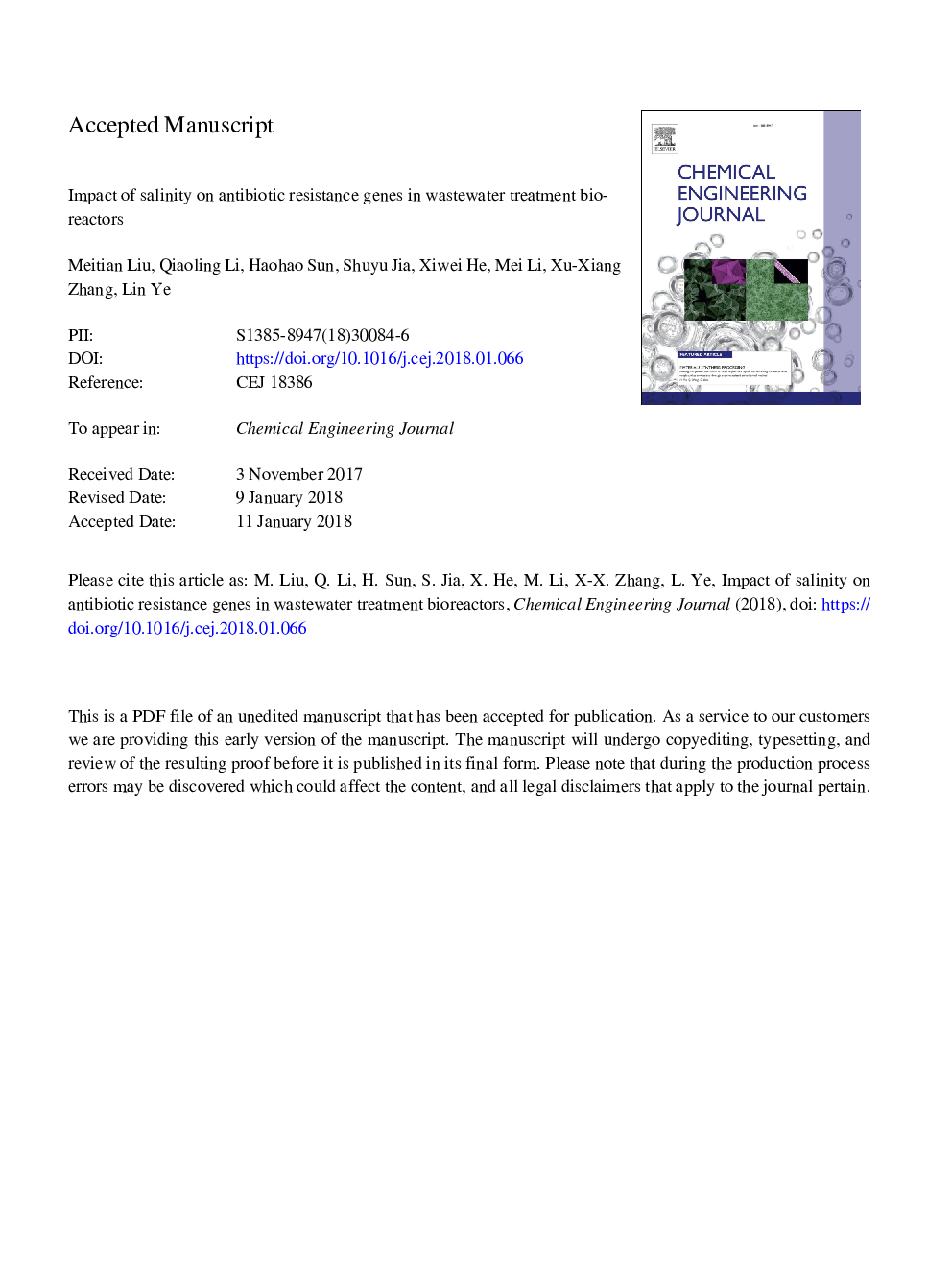| Article ID | Journal | Published Year | Pages | File Type |
|---|---|---|---|---|
| 6580268 | Chemical Engineering Journal | 2018 | 30 Pages |
Abstract
High salinity is a common feature of industrial wastewater, however, little is known about the impact of salinity on antibiotic resistance genes (ARGs) and overall bacteria communities in saline wastewater treatment processes. In this study, three reactors were operated for 120â¯days under different salinities to investigate the dynamics of ARGs and microbial communities. The results showed that the nitrogen removal efficiency of the reactors decreased from 85% to 20% when the salinity was increased from zero to 4%, while 95% organic matter removal could still be achieved at 4% salinity. Interestingly, it was found that the relative abundance of ARGs (especially sul2, tetG and amrB) dropped by almost 50% in the reactor added with sodium chloride. Correlation analysis showed that some bacterial operational taxonomic units were highly associated with the ARGs during wastewater treatment processes in the reactors, suggesting that high salinity may inhibit the growth of some bacteria carrying ARGs and may be used as a potential approach for ARG reduction in the wastewater treatment systems.
Related Topics
Physical Sciences and Engineering
Chemical Engineering
Chemical Engineering (General)
Authors
Meitian Liu, Qiaoling Li, Haohao Sun, Shuyu Jia, Xiwei He, Mei Li, Xu-Xiang Zhang, Lin Ye,
